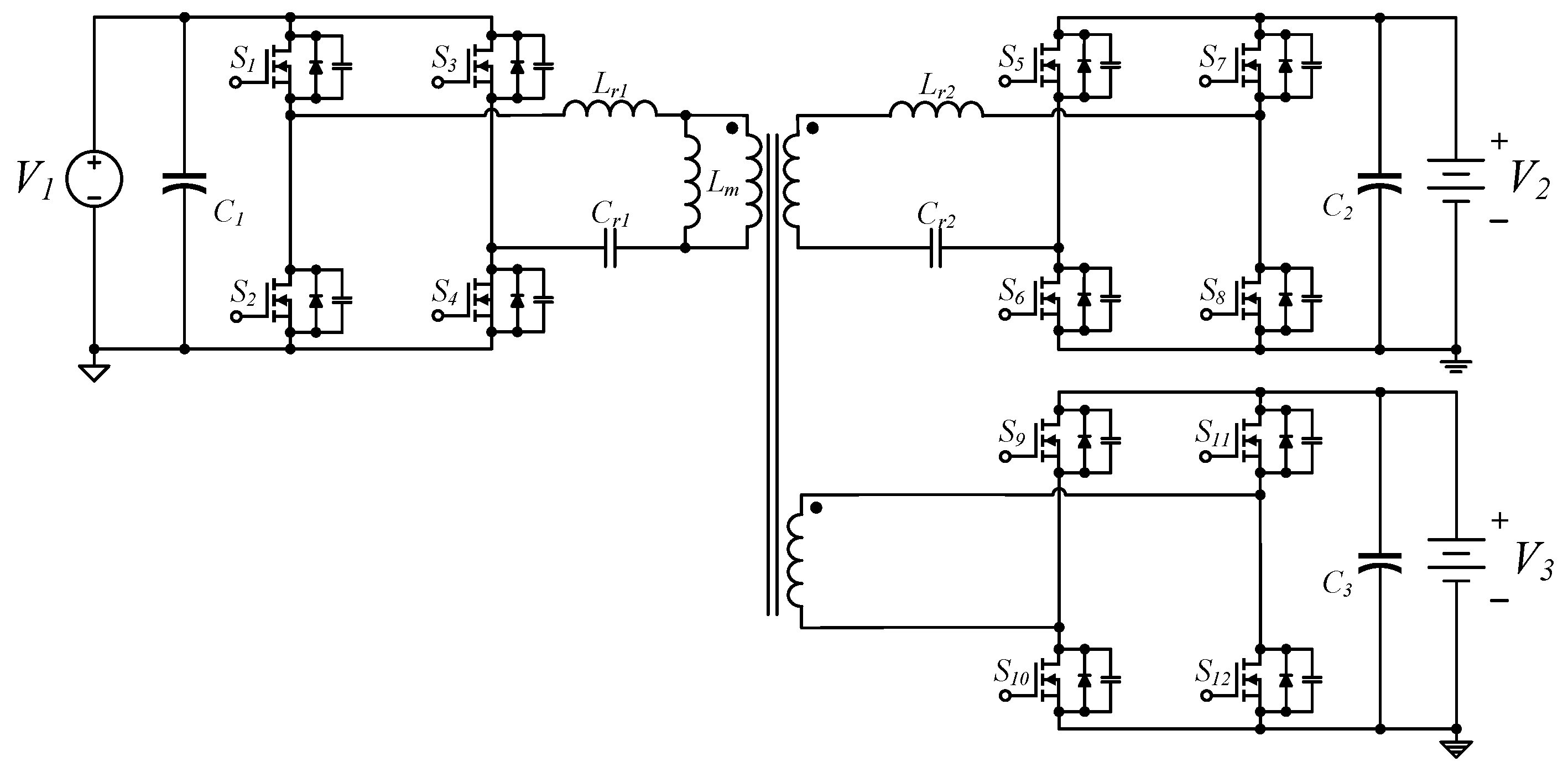An Isolated Three-Port Power Converter with 2C3L and 2C2L Resonant Circuits
Abstract
:1. Introduction
2. Introducing the Circuit Architecture and Its Features
2.1. Circuit Architecture
2.2. Circuit Gains in the Resonant Converter
3. Inferences about Voltage Gain with 2C3L and 2C2L Circuits
3.1. Inferences about Voltage Gain with the 2C3L Circuit
3.2. Inferences about Voltage Gains with 2C2L Circuit
4. Circuit Parameters and Design
- Step 0: Determining the converter specifications.
- Step 1: Selecting the Qs, k, g, and m values of the 2C3L simplified circuit in the forward energy charging mode
- Selecting Quality Factor Q: The relation of the voltage gains of the 2C3L resonant circuit is given by Equation (1). The desired Q value cannot be easily determined using this relation. According to the literature, most studies have involved simplifying the 2C3L circuit into an LLC circuit [12,13,14,15]. The inductive reactance value of in Figure 4 is typically much greater than those of and . In particular, when the system is operating near the resonant frequency, the resonant reactance values of and decrease. As a result, the position of exciting inductance L_m shifts toward the load side. In Figure 8, exciting inductance of the 2C3L in Figure 4 shifts toward the load side, forming a new and simplified LLC circuit. However, Figure 9 and Figure 10 indicate differences between the simplified LLC resonant gain curve (Figure 9) and the 2C3L resonant gain curve (Figure 10). Figure 9 shows that there was no double peak problem for the LLC resonant circuit. However, as shown in Figure 10, for higher-order 3L2C resonant circuits, the high Q values easily result in double peaks, which cannot be detected when the Q values are low. Double peaks resulting from an overly high Q value could not be observed on the LLC gain curve. Consequently, Q values cannot be directly selected from the LLC resonant gain curve and must instead be selected from the 2C3L resonant gain curve. To simplify the design process, the quality factor of the simplified LLC circuit was designated as Q, and this Q value was used to obtain the parameters of the energy charge–discharge components and in the resonant circuit, which were designated as the benchmarks for adjusting the gain curves. By using these benchmarks, the parameters of the energy charge–discharge components and in the 2C3L resonant circuit, corresponding to the LLC gain curves under different Qs values, can be obtained. Qs is not equal to the actual quality factor of the circuit. As Figure 10 demonstrates, an overly high Qs cannot satisfy the maximum voltage gain value, and if the Qs is too small, the smallest voltage gain value cannot be satisfied either. In the end, this study used 0.4 as the Qs value. Whether this value satisfied the study requirements was determined on the basis of the design process.
- Selecting the Value of Inductance Coefficient k: The smaller the exciting inductance , the greater the peak value of the exciting current becomes. This ensures that the parasitic capacitance energy exchange can be completed during the dead time, thereby achieving ZVS zero-voltage soft switching in the input-side power switch. As illustrated in Figure 11, the smaller the k value, the better the frequency modulation performance; however, this simultaneously augments exciting current and therefore increases the turn-off loss and conduction loss in the input-side power switch, thus decreasing the overall efficiency of the converter. In terms of soft switching and overall efficiency, increasing the k value is desirable. To satisfy the frequency modulation range, a greater k value should be selected to ensure soft switching, frequency modulation capabilities, and overall efficiency. The k value was determined as 5 in this study.
- Selecting the g Value of the Resonant Capacitance Ratio and the m Value of the Resonant Inductance Ratio: When g = m = 1 was used in the gain characteristics analysis, the output-side resonant component became the same as the input-side resonant component after it was referred to the input-side, similar to the forward and reverse gain curves within the 2C2L resonant architecture. In the 2C3L resonant framework, the gain curves were exactly the same, providing the converter with the advantages of an LLC resonant circuit in both the forward and reverse directions.
- Step 2: Calculating the resonant circuit parameters
- Step 3: Determining whether the voltage gain requirements of the 2C3L circuit in the G2V mode are satisfied
- Step 4: Determining whether the voltage gain requirements of the 2C3L circuit in the V2G mode are satisfied
- Step 5: Selecting the Qs′ and g values of the 2C2L simplified circuit when in the forward energy charging mode
- Step 6: Determining whether the voltage gain requirements of the 2C2L circuit in V2B mode and G2B mode are satisfied
- Step 7: Determining whether the voltage gain requirements of the 2C2L circuit in B2V mode and B2G mode are satisfied
- Step 8: Designating the operating frequency range
- Step 9: Designating the operating deadtime
5. Experimental Results
5.1. Key Waveforms When Operating in G2V Energy Charging Mode
5.2. Efficiency of Six Operating Modes
6. Conclusions
Author Contributions
Funding
Conflicts of Interest
References
- Foti, S.; Testa, A.; Scelba, G.; De Caro, S.; Tornello, L.D. A V2G Integrated Battery Charger Based on an Open End Winding Multilevel Configuration. IEEE Open J. Ind. Appl. 2020, 1, 216–226. [Google Scholar] [CrossRef]
- Wang, S.; Li, H.; Zhang, Z.; Li, M.; Zhang, J.; Ren, X.; Chen, Q. Multifunction Capability of SiC Bidirectional Portable Chargers for Electric Vehicles. IEEE J. Emerg. Sel. Top. Power Electron. 2021, 9, 6184–6195. [Google Scholar] [CrossRef]
- Pérez, P.; Veirano, F.; Silveira, F. A Compact Lithium-Ion Battery Charger for Low-Power Applications. IEEE Trans. Circuits Syst. II Express Briefs 2022, 69, 669–673. [Google Scholar] [CrossRef]
- Dinh, H.T.; Yun, J.; Kim, D.M.; Lee, K.-H.; Kim, D. A Home Energy Management System with Renewable Energy and Energy Storage Utilizing Main Grid and Electricity Selling. IEEE Access 2020, 8, 49436–49450. [Google Scholar] [CrossRef]
- Lee, S.; Choi, D.-H. Federated Reinforcement Learning for Energy Management of Multiple Smart Homes with Distributed Energy Resources. IEEE Trans. Ind. Inform. 2022, 18, 488–497. [Google Scholar] [CrossRef]
- Aznavi, S.; Fajri, P.; Asrari, A.; Harirchi, F. Realistic and Intelligent Management of Connected Storage Devices in Future Smart Homes Considering Energy Price Tag. IEEE Trans. Ind. Appl. 2020, 56, 1679–1689. [Google Scholar] [CrossRef]
- Shah, S.S.; Rastogi, S.K.; Bhattacharya, S. Paralleling of LLC Resonant Converters. IEEE Trans. Power Electron. 2021, 36, 6276–6287. [Google Scholar] [CrossRef]
- Tang, X.; Wu, H.; Hua, W.; Yu, Z.; Xing, Y. Three-Port Bidirectional Series-Resonant Converter with First-Harmonic-Synchronized PWM. IEEE J. Emerg. Sel. Top. Power Electron. 2021, 9, 1410–1419. [Google Scholar] [CrossRef]
- Tran, Y.; Freijedo, F.D.; Dujic, D. Open-loop power sharing characteristic of a three-port resonant LLC converter. CPSS Trans. Power Electron. Appl. 2019, 4, 171–179. [Google Scholar] [CrossRef]
- Yan, X.; Liu, C.; Liu, S.; Guo, X.; Zou, X. An Improved Interleaved Buck/Boost Integrated CLLLC Three-Port DC-DC Converter for Wide Input Range. In Proceedings of the 2021 IEEE 2nd China International Youth Conference on Electrical Engineering (CIYCEE), Chengdu, China, 15–17 December 2021; pp. 1–7. [Google Scholar]
- Wang, C.; Li, W.; Wang, Y.; Han, F.; Meng, Z.; Li, G. An Isolated Three-Port Bidirectional DC-DC Converter with Enlarged ZVS Region for HESS Applications in DC Microgrids. Energies 2017, 10, 446. [Google Scholar] [CrossRef] [Green Version]
- Huang, J.; Liang, T.; Tseng, W.; Chen, Z. Design and Implementation of Three-Level Half-Bridge Bidirectional CL3C Resonant DC Converter. In Proceedings of the 2019 IEEE Energy Conversion Congress and Exposition (ECCE), Baltimore, MD, USA, 29 September–3 October 2019. [Google Scholar]
- Zahid, Z.U.; Dalala, Z.M.; Chen, R.; Chen, B.; Lai, J. Design of Bidirectional DC–DC Resonant Converter for Vehicle-to-Grid (V2G) Applications. IEEE Trans. Transp. Electrif. 2015, 1, 232–244. [Google Scholar] [CrossRef]
- Xie, H.; He, Y.; Hang, L.; Zeng, P.; Zhan, X. Research on Improved Modeling Method of CLLLC Resonant Converter. In Proceedings of the 2022 IEEE International Power Electronics and Application Conference and Exposition (PEAC), Guangzhou, China, 4–7 November 2022; pp. 1642–1648. [Google Scholar]
- Zong, S.; Fan, G.; Yang, X. Double Voltage Rectification Modulation for Bidirectional DC/DC Resonant Converters for Wide Voltage Range Operation. IEEE Trans. Power Electron. 2019, 34, 6510–6521. [Google Scholar] [CrossRef]
- Mouser Electronics. Available online: https://www.mouser.tw/datasheet/2/827/DS_UJ3C065080K3S-1530409.pdf (accessed on 9 January 2023).
- Stathis, J.H.; Zafar, S. The negative bias temperature instability in MOS devices: A review. Microelectron. Reliab. 2006, 46, 270–286. [Google Scholar] [CrossRef]
- Schmidt, S.; Oberrath, J.; Mercorelli, P. A Sensor Fault Detection Scheme as a Functional Safety Feature for DC-DC Converters. Sensors 2021, 21, 6516. [Google Scholar] [CrossRef]
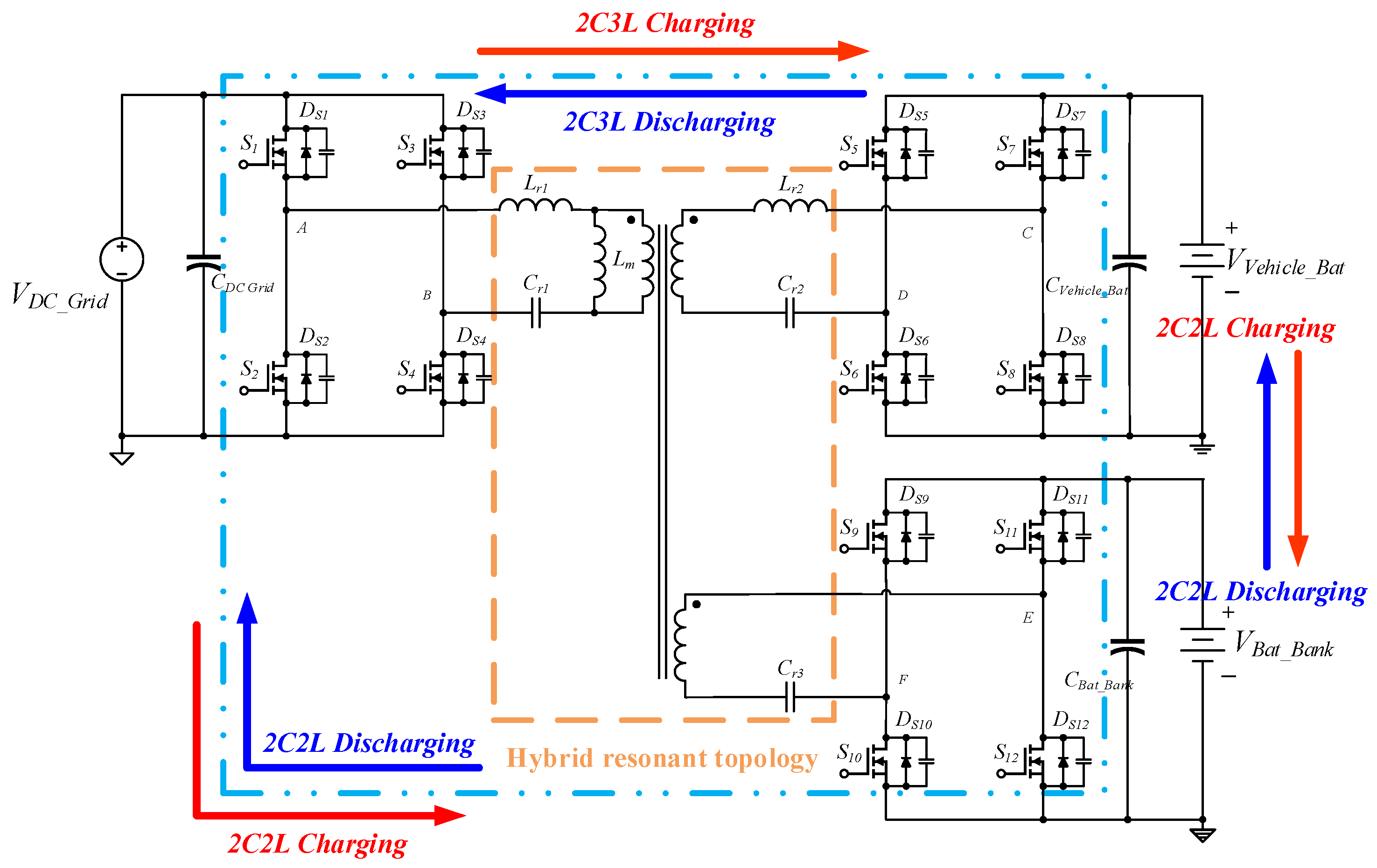



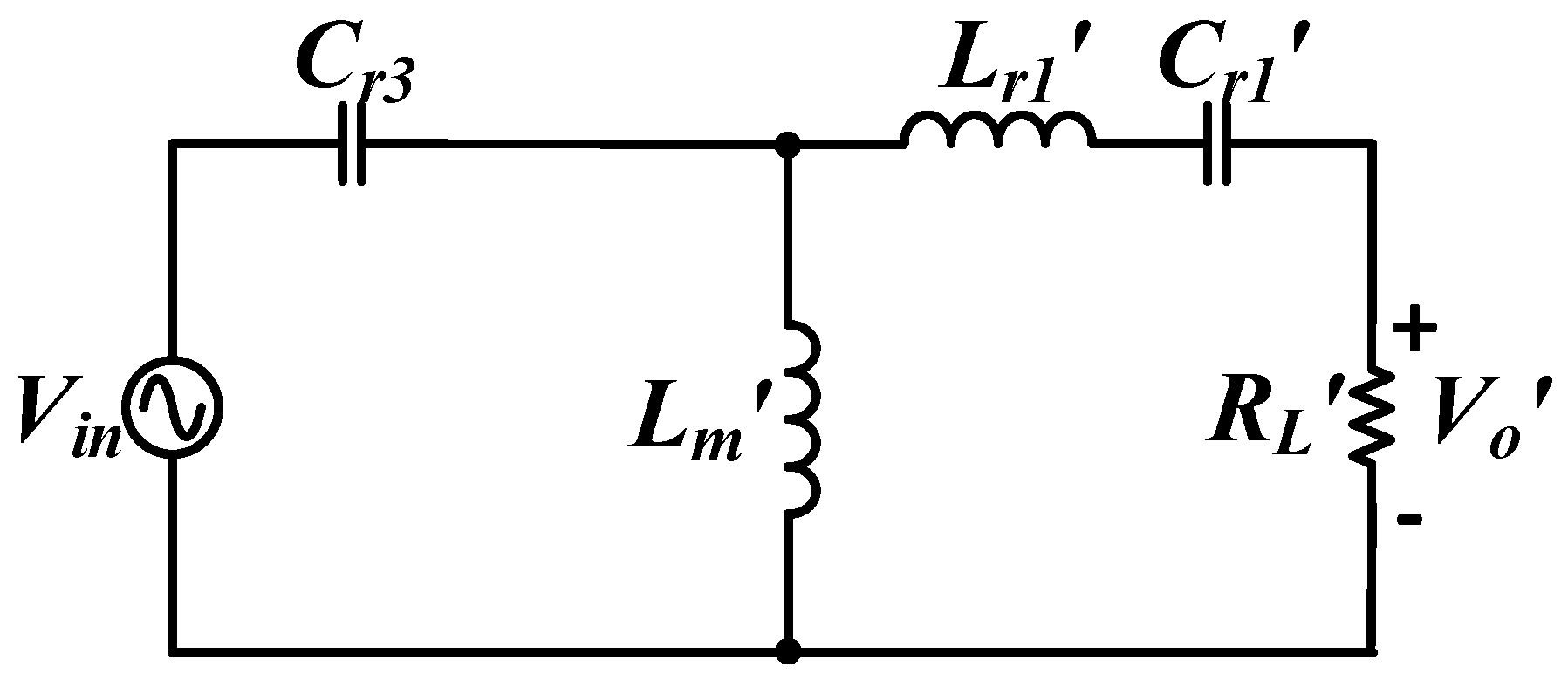
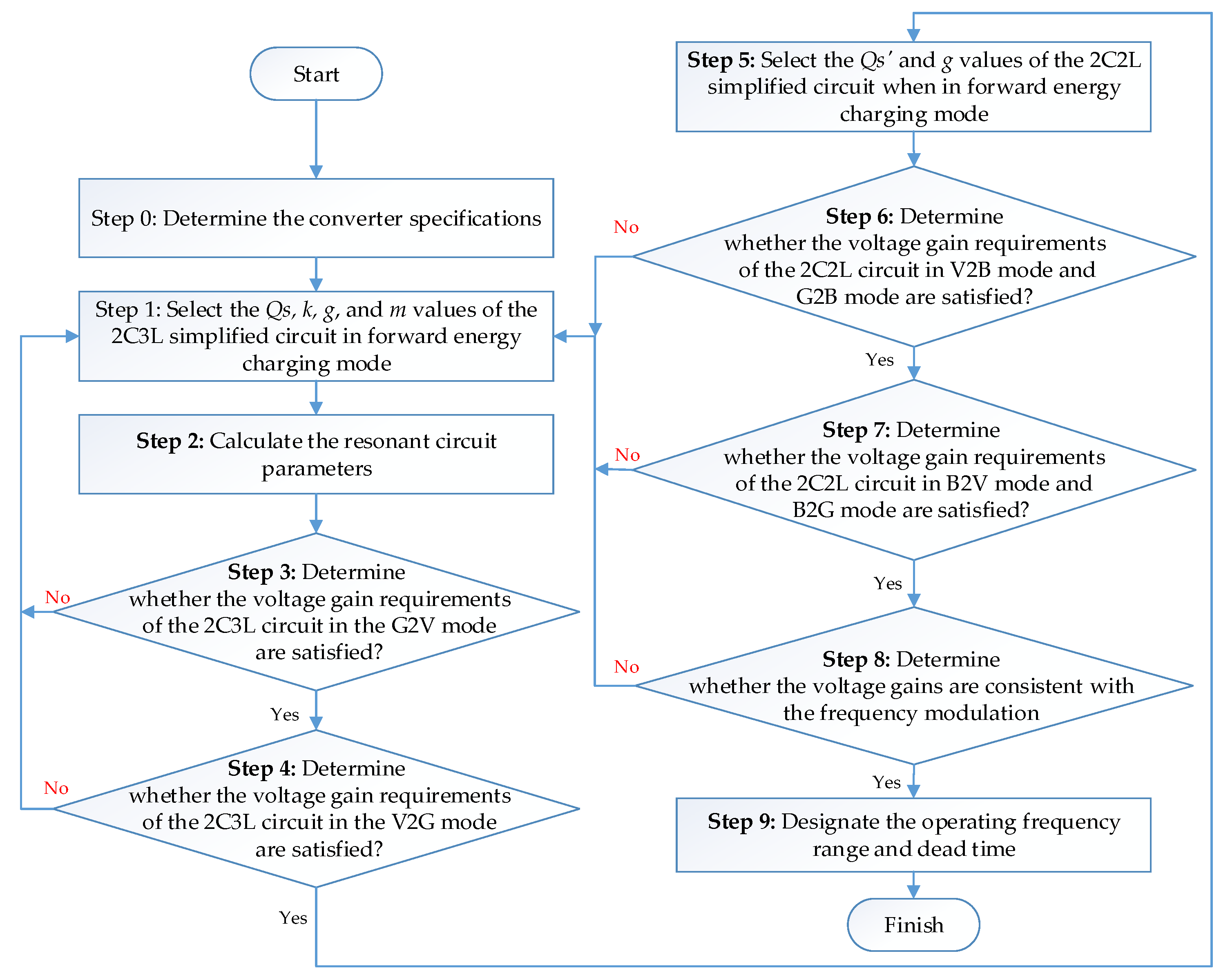

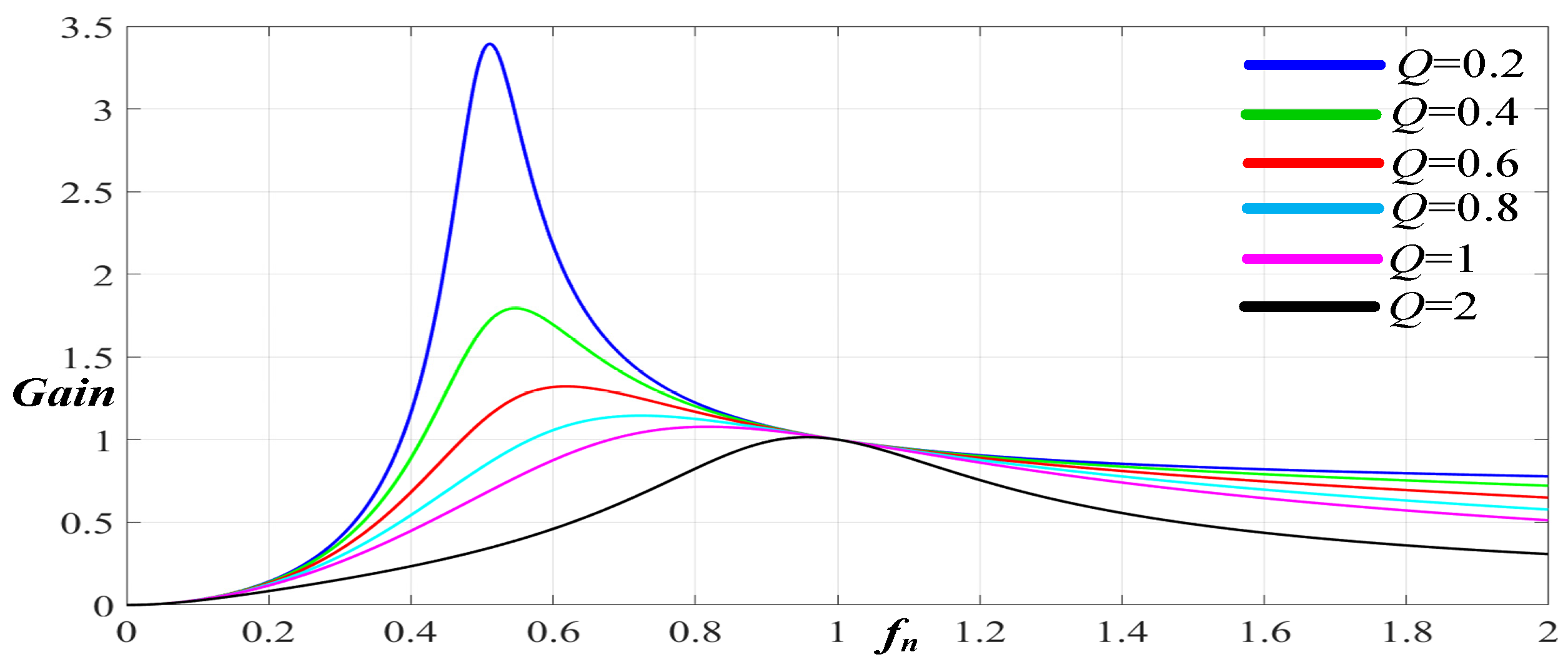

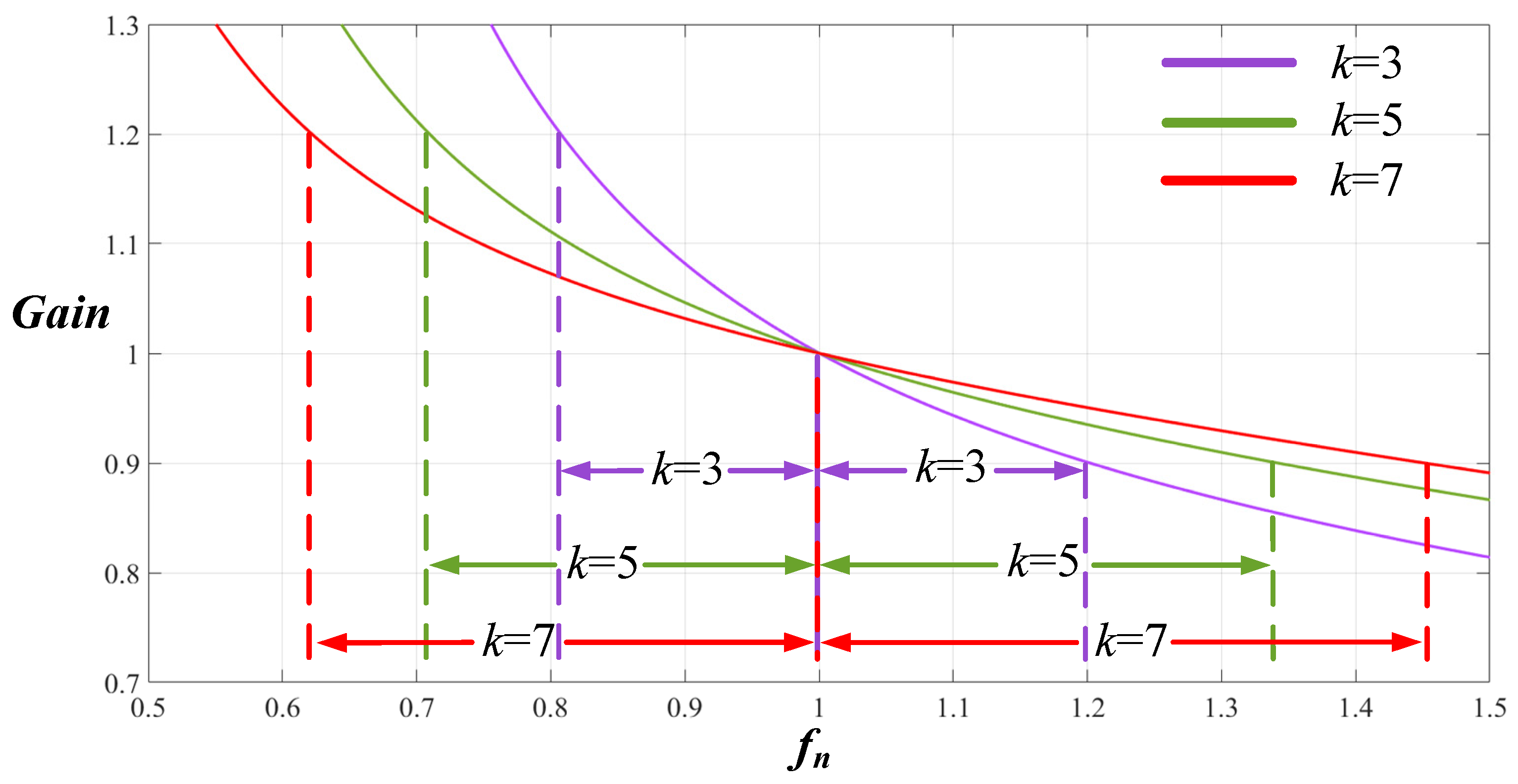
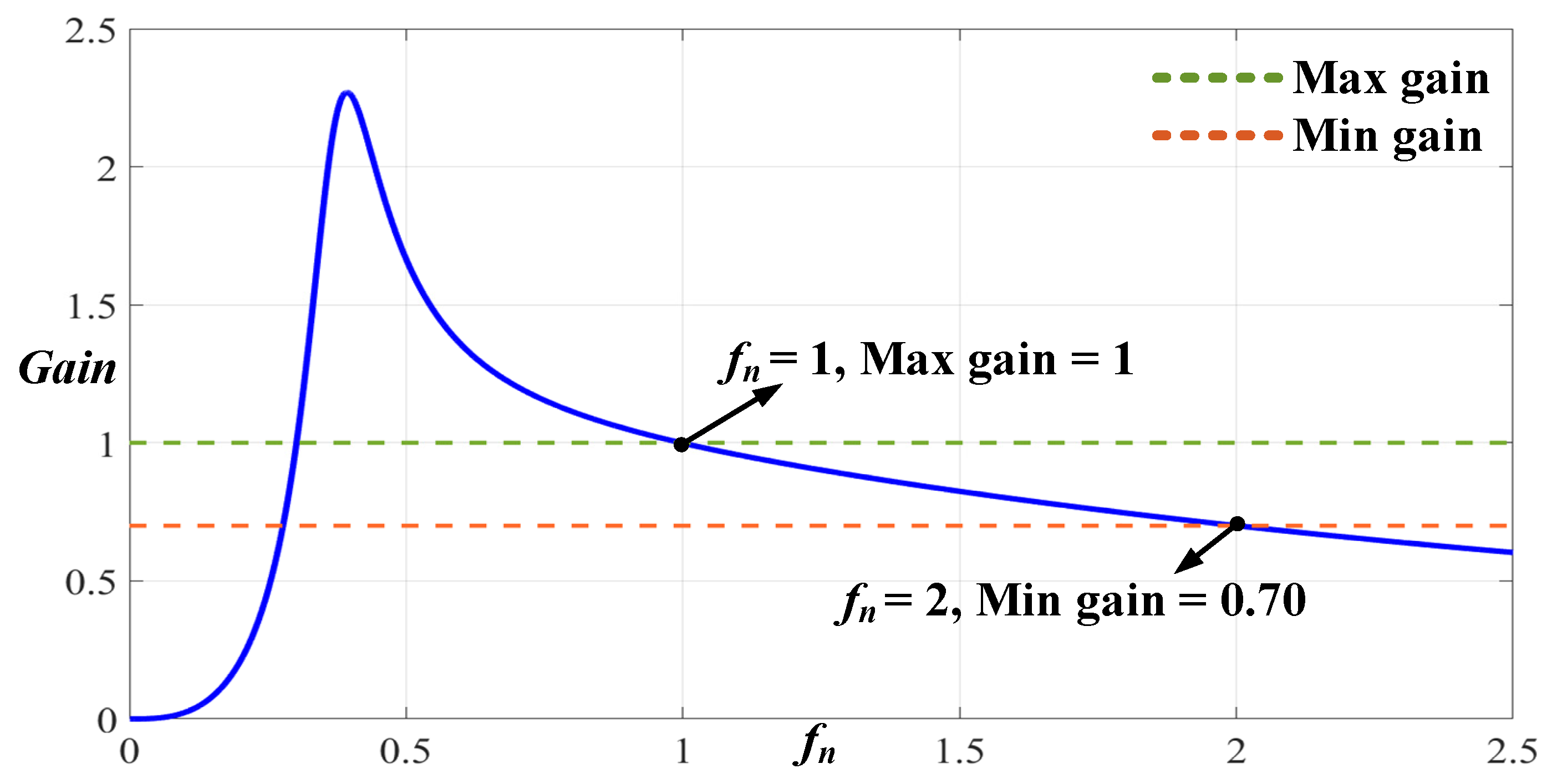
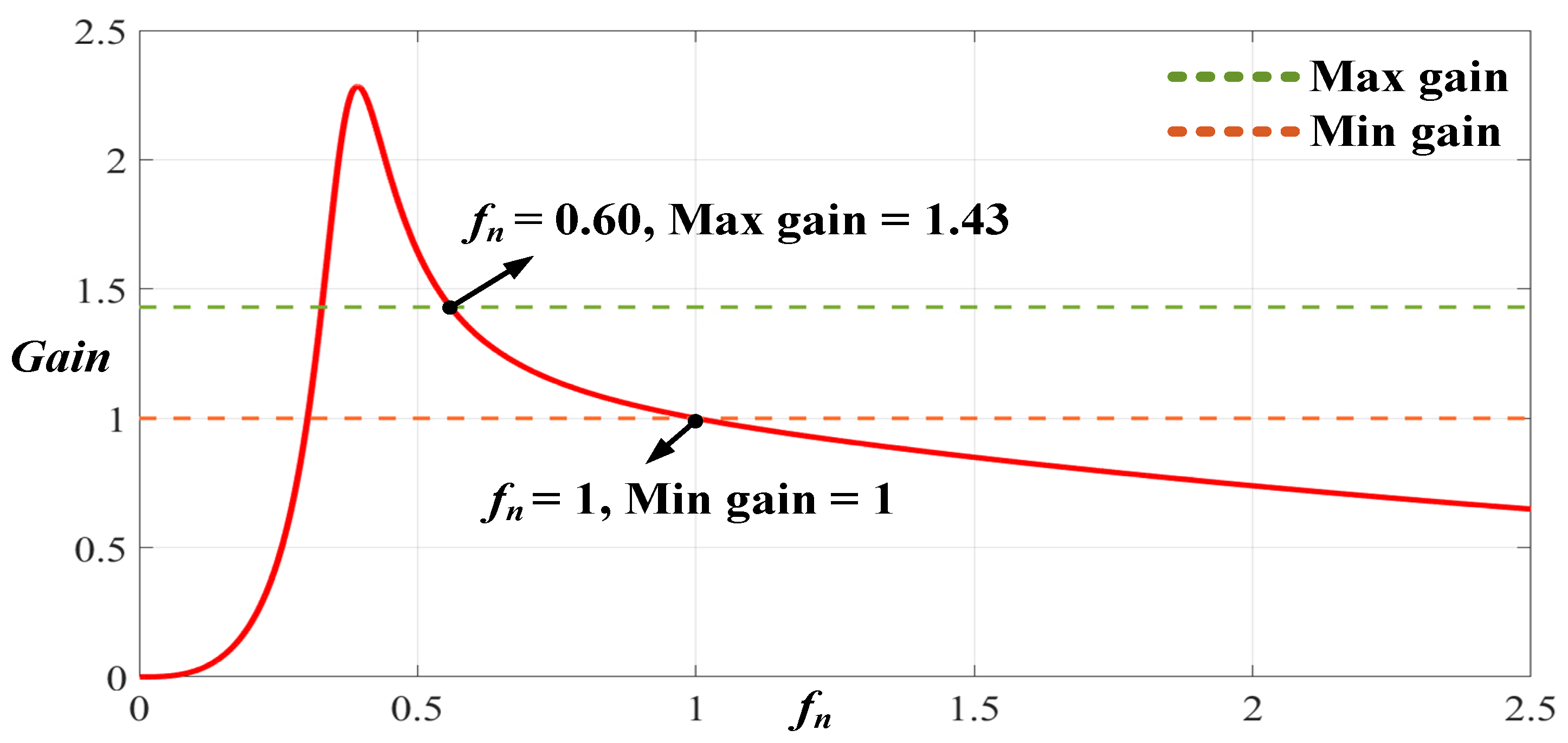
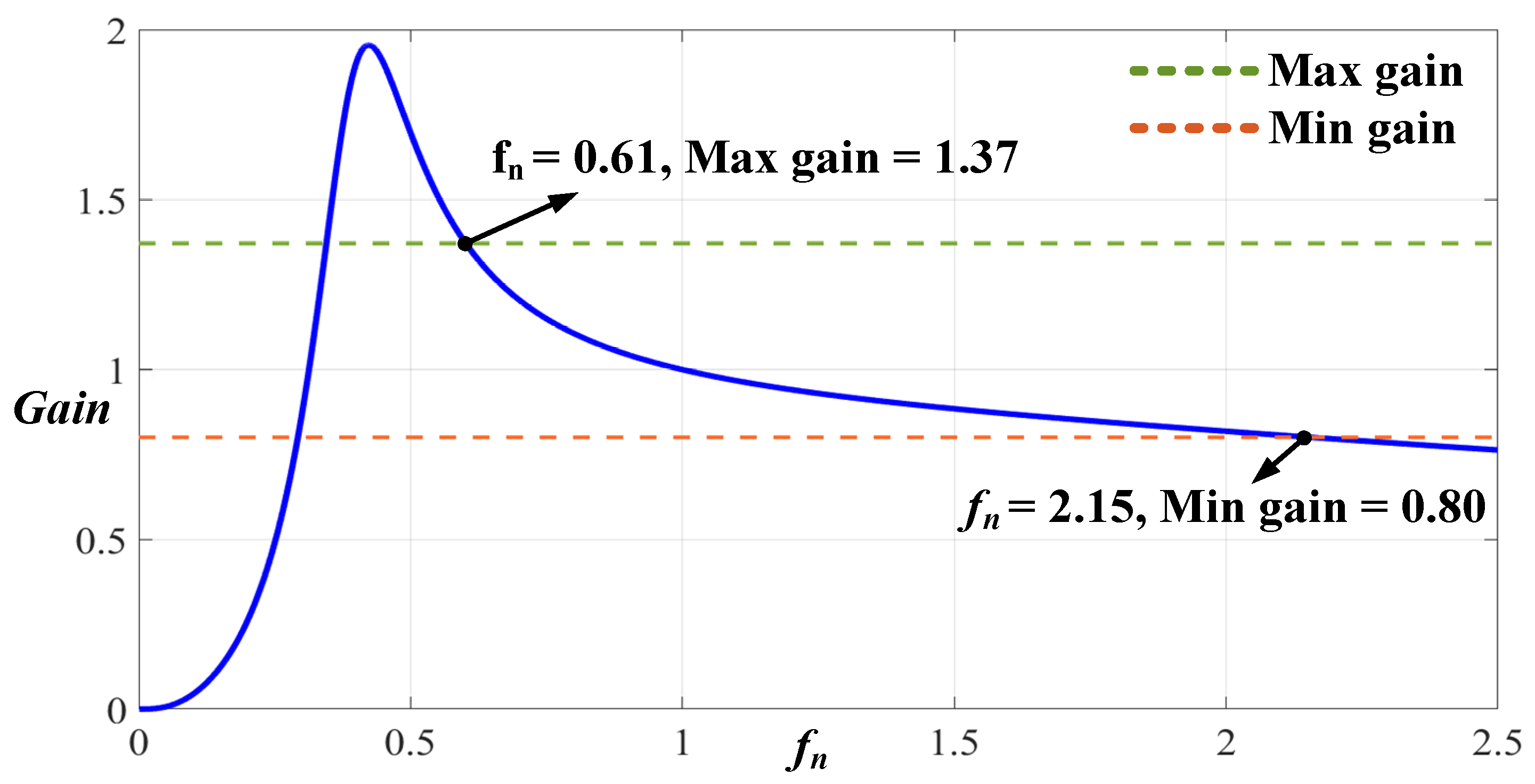


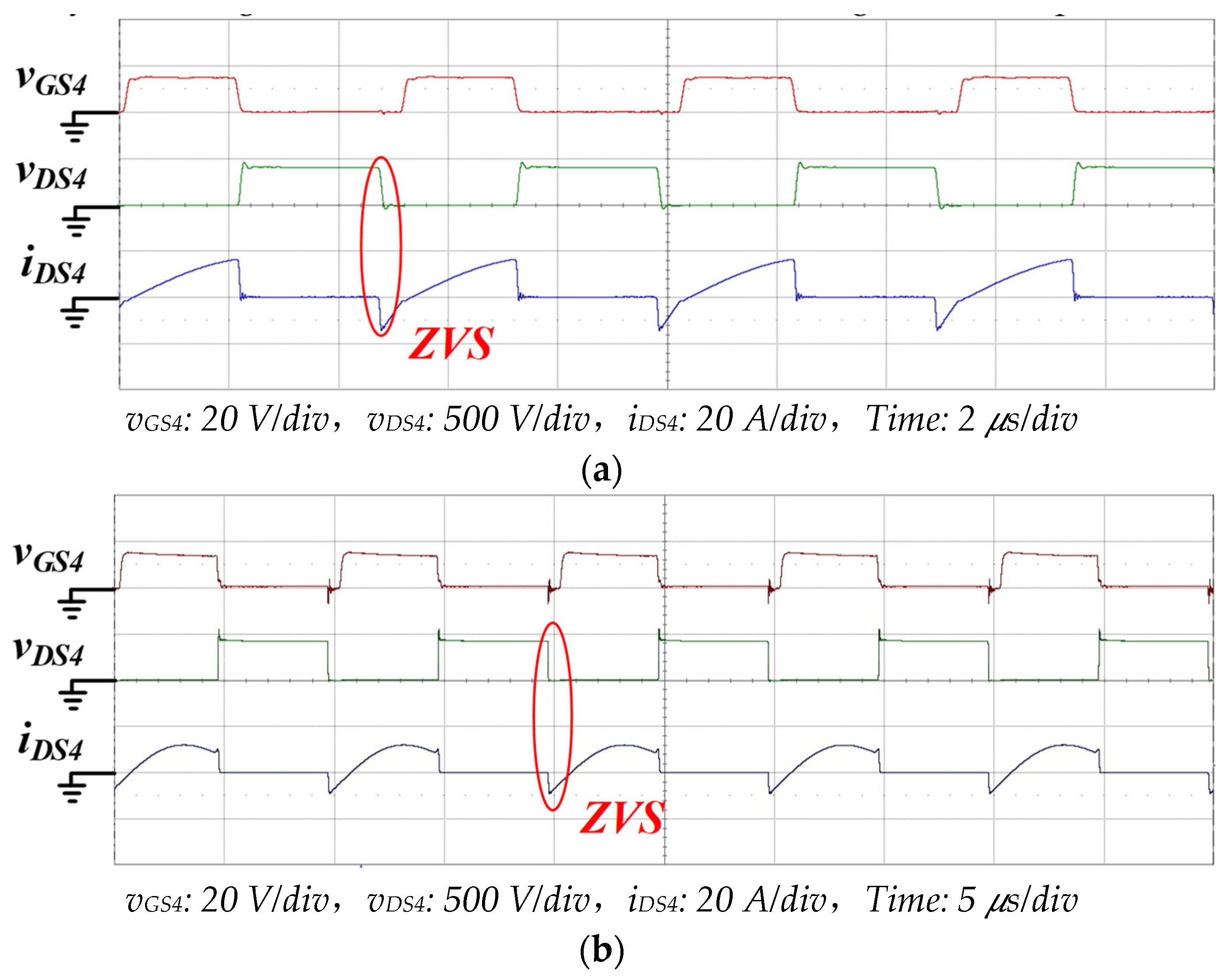

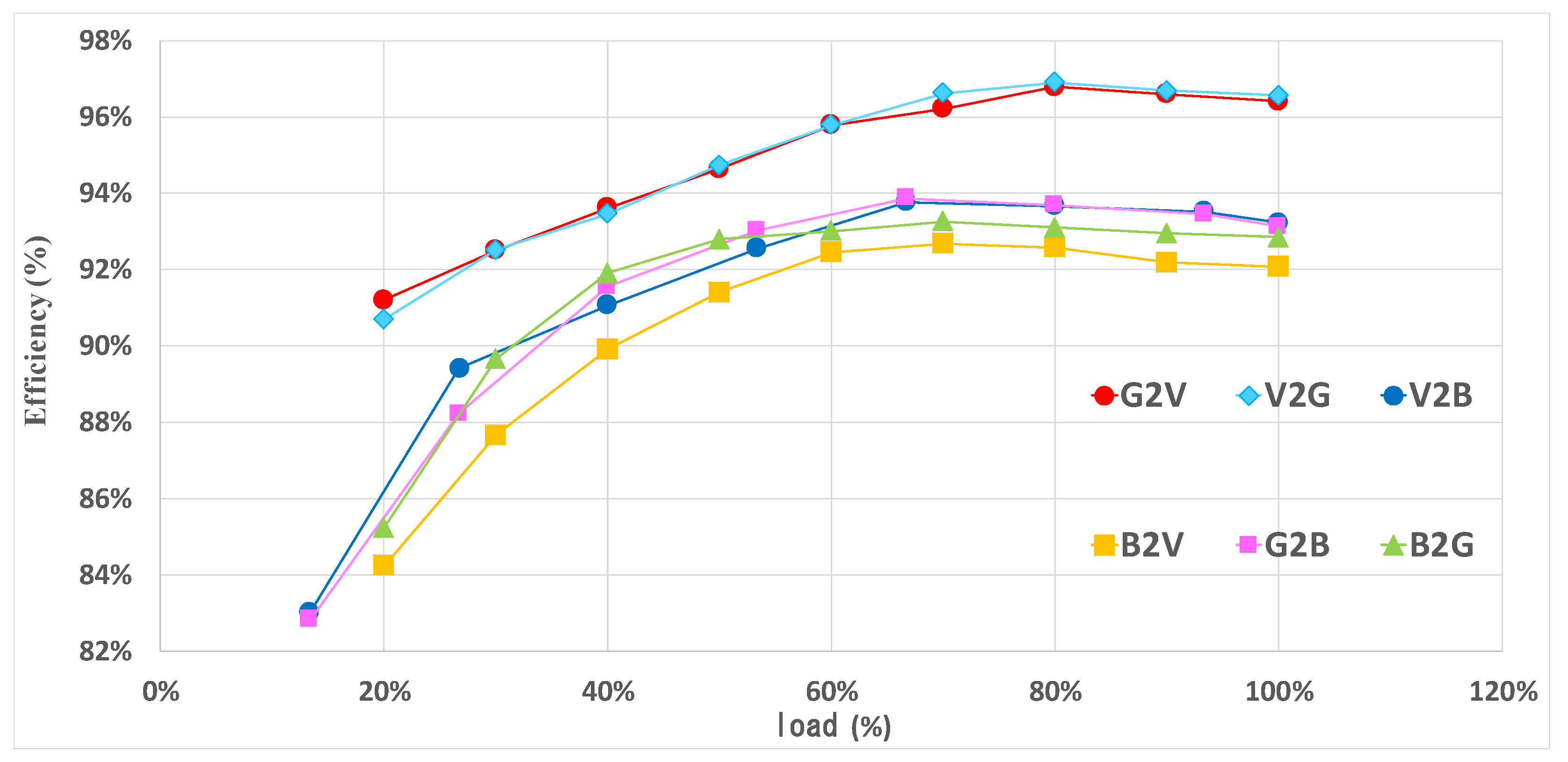
| Mode | Power Flow | Conversion Function |
|---|---|---|
| G2V | G → V | 2C3L (Charging) |
| V2G | G ← V | 2C3L (Discharging) |
| V2B | V → B | 2C2L (Charging) |
| B2V | V ← B | 2C2L (Discharging) |
| G2B | G → B | 2C2L (Charging) |
| B2G | G ← B | 2C2L (Discharging) |
| Description | Value |
|---|---|
| Rated voltage of DC grid port, VGrid | 400 V |
| Rated voltage range of vehicle battery port, VV_B | 280–403 V |
| Rated voltage range of battery charging port, VB_B | 180–213 V |
| Maximum output current of DC grid port | 7.5 A |
| Maximum output current of vehicle battery port | 7.5 A |
| Maximum output current of battery charging port | 15 A |
| Maximum conversion power | 3 kW |
| First resonance point, fr1 | 100 kHz |
| Normalized operational frequency, fn | 1.0 |
| Parameters | Specifications |
|---|---|
| Maximum switching power | 3 kW |
| Rated voltage and current of the DC grid port | 400 V/7.5 A |
| Rated voltage and current of the vehicle battery port | 280~403 V/8.33 A |
| Rated voltage and current of the battery charging port | 180~213 V/15.63 A |
| Frequency modulation range | 60 kHz~240 kHz |
| Component and Parameter Symbols | Values |
|---|---|
| Transformer turn ratio NGrid:NV_B:NB_B | 1.8:1.8:1 |
| Exciting inductance Lm | 75.4 μH |
| Resonant inductance on the DC grid side, Lr1 | 15.1 μH |
| Resonant inductance on the vehicle-use battery side, Lr2 | 15.1 μH |
| Resonant capacitance on the DC grid side, Cr1 | 168 nF |
| Resonant capacitance on the vehicle-use battery side, Cr2 | 168 nF |
| Resonant capacitance on the battery charging side, Cr3 | 540 nF |
| Three-port output capacitance COut | 270 nF |
| Power switch S1–S12 | UJ3C065080K3S |
Disclaimer/Publisher’s Note: The statements, opinions and data contained in all publications are solely those of the individual author(s) and contributor(s) and not of MDPI and/or the editor(s). MDPI and/or the editor(s) disclaim responsibility for any injury to people or property resulting from any ideas, methods, instructions or products referred to in the content. |
© 2023 by the authors. Licensee MDPI, Basel, Switzerland. This article is an open access article distributed under the terms and conditions of the Creative Commons Attribution (CC BY) license (https://creativecommons.org/licenses/by/4.0/).
Share and Cite
Chang, Y.-N.; Yan, Y.-H.; Huang, S.-M. An Isolated Three-Port Power Converter with 2C3L and 2C2L Resonant Circuits. Energies 2023, 16, 1830. https://doi.org/10.3390/en16041830
Chang Y-N, Yan Y-H, Huang S-M. An Isolated Three-Port Power Converter with 2C3L and 2C2L Resonant Circuits. Energies. 2023; 16(4):1830. https://doi.org/10.3390/en16041830
Chicago/Turabian StyleChang, Yong-Nong, Yih-Her Yan, and Sheng-Min Huang. 2023. "An Isolated Three-Port Power Converter with 2C3L and 2C2L Resonant Circuits" Energies 16, no. 4: 1830. https://doi.org/10.3390/en16041830






